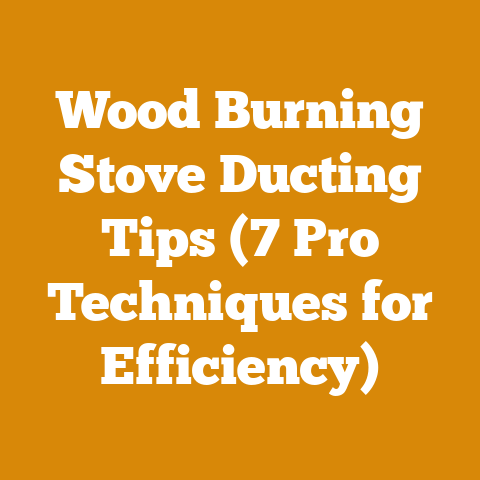Tree Topping vs Crown Reduction (Expert Arborist Tips Inside)
Tree Topping vs. Crown Reduction: An Expert Arborist’s Guide to Costs and Considerations
Have you ever looked at a tree in your yard and wondered if it needed some attention? Maybe it’s getting too tall, blocking sunlight, or just looks a little… off. The question then becomes: what’s the best way to address the problem? Two common solutions that get tossed around are tree topping and crown reduction. But which one is right for your tree, and more importantly, how will it impact your wallet? Today, I’m going to break down the differences between tree topping and crown reduction, the costs involved, and share some expert tips to help you make the best decision for your trees and your budget.
Understanding the Difference: Topping vs. Reduction
Before we dive into the nitty-gritty of costs, let’s clear up the confusion between tree topping and crown reduction. These are not the same thing, and the differences are crucial.
-
Tree Topping: Imagine someone just whacking off the top of a tree, leaving behind unsightly stubs. That’s essentially what topping is. It’s a drastic and indiscriminate removal of large branches, often cutting them back to stubs between major branch unions.
-
Crown Reduction: This is a more surgical approach. It involves selectively pruning branches back to lateral branches that are large enough to assume the terminal role. The goal is to reduce the overall size of the tree’s crown while maintaining its natural shape and structural integrity.
I’ve seen the damage caused by tree topping countless times. Homeowners think they’re saving money upfront, but they’re setting their trees up for a host of problems, including:
- Weakened Structure: Topping removes the tree’s natural defense mechanisms, making it more susceptible to disease and insect infestations.
- Unsightly Appearance: Topped trees look unnatural and can take years to recover, if they ever do.
- Increased Maintenance Costs: The vigorous regrowth that follows topping often requires more frequent pruning in the long run.
- Reduced Property Value: A poorly maintained tree can detract from your home’s curb appeal and overall value.
Crown reduction, on the other hand, is a much healthier and more sustainable practice. When done correctly, it can:
- Reduce the tree’s overall size without compromising its health or appearance.
- Improve air circulation and sunlight penetration within the crown.
- Reduce the risk of storm damage by decreasing wind resistance.
- Promote healthy growth and prolong the tree’s lifespan.
Cost Factors: The Devil is in the Details
Now, let’s talk about the money. The cost of tree topping and crown reduction can vary widely depending on several factors. I’ve seen prices range from a few hundred dollars to several thousand, so it’s important to understand what you’re paying for.
1. Tree Size and Species
The size and species of the tree are major determinants of cost. Larger trees require more time, labor, and specialized equipment to prune. Hardwood trees like oak and maple are generally more expensive to work on than softer woods like pine or willow.
- Small Trees (under 20 feet): Topping might cost $100-$300, while crown reduction could range from $200-$500.
- Medium Trees (20-40 feet): Topping could be $300-$700, and crown reduction $500-$1,200.
- Large Trees (over 40 feet): Topping could run $700-$1,500 or more, while crown reduction could easily exceed $1,200 and go up to $3,000 or more.
These are just estimates, of course. I always recommend getting multiple quotes from qualified arborists to get a better sense of the going rate in your area.
2. Tree Condition and Accessibility
The condition of the tree and its accessibility also play a significant role in pricing. If the tree is heavily diseased or has significant structural defects, it will require more time and care to prune safely. Similarly, if the tree is located in a difficult-to-reach area, such as near power lines or overhanging a building, the cost will be higher due to the increased risk and complexity of the job.
I once had a job where a massive oak tree was growing right next to a house, with branches extending over the roof. Just getting the equipment into the yard was a challenge, and the risk of damaging the house was significant. The cost of that crown reduction was significantly higher than it would have been for a similar-sized tree in an open field.
3. Labor Costs
Labor costs are a significant component of any tree care project. Arborists are skilled professionals who undergo extensive training and certification. Their time is valuable, and their expertise is essential for ensuring the job is done safely and correctly.
- Hourly Rates: Arborist hourly rates can range from $75 to $150 or more, depending on experience and location.
- Crew Size: The size of the crew needed for the job will also affect the cost. A larger crew can complete the work more quickly, but it will also increase the overall labor expense.
I always advise homeowners to ask about the qualifications and experience of the arborists who will be working on their trees. A certified arborist has demonstrated a high level of knowledge and skill in tree care practices.
4. Equipment Costs
Tree care requires specialized equipment, such as chainsaws, chippers, aerial lifts, and rigging gear. The cost of this equipment can be substantial, and arborists must factor it into their pricing.
- Chainsaws: Professional-grade chainsaws can cost anywhere from $500 to $2,000 or more.
- Chippers: Wood chippers are essential for disposing of branches and debris. They can range in price from $5,000 to $50,000 or more, depending on size and capacity.
- Aerial Lifts: Aerial lifts, also known as bucket trucks, are used to access trees that are too tall to climb safely. Rental fees for aerial lifts can range from $300 to $1,000 per day.
5. Debris Removal
The cost of debris removal is another factor to consider. After pruning or topping a tree, there will be a significant amount of branches and debris to dispose of. Arborists typically charge an additional fee for this service, which can range from $100 to $500 or more, depending on the amount of debris and the distance to the disposal site.
Some arborists offer the option of leaving the wood for the homeowner to use as firewood. This can save you money on debris removal costs, but you’ll need to be prepared to handle the wood yourself.
6. Permits and Regulations
In some areas, you may need to obtain a permit before pruning or removing a tree. Permit fees can vary depending on the municipality and the size of the tree. It’s important to check with your local government to determine if a permit is required.
I once had a client who was fined heavily for removing a tree without a permit.
7. Location
Where you live significantly impacts tree service costs. Urban areas with higher living costs generally see higher labor rates for arborists. States with stricter regulations regarding tree care and removal may also have higher prices due to increased compliance costs. The distance an arborist needs to travel to your property can also affect the price, especially if they are transporting heavy equipment.
8. Seasonality
The time of year can also influence pricing. Tree services often experience higher demand during the spring and fall when homeowners are preparing their landscapes. During these peak seasons, you might pay a premium for services. Conversely, scheduling your tree work during the slower winter months could potentially save you money.
9. Insurance
A reputable arborist will carry liability insurance and worker’s compensation insurance. This protects you, the homeowner, from financial liability in case of accidents or property damage during the tree work. While insurance adds to the arborist’s overhead costs, it’s a critical safeguard and should be considered a worthwhile investment. Be wary of arborists who offer significantly lower prices but lack proper insurance coverage.
10. Waste Disposal Methods
The method of waste disposal can also affect costs. Chipping branches and leaving the mulch on-site is often the cheapest option. Hauling away debris to a landfill or recycling center will incur additional fees. Some arborists may offer to convert the wood into firewood, which can be a more sustainable and potentially cost-effective solution.
The Cost of Topping: A Penny Wise, Pound Foolish Approach
While tree topping may seem like a cheaper option upfront, it can actually cost you more in the long run. As I mentioned earlier, topping weakens the tree’s structure, making it more susceptible to disease, insect infestations, and storm damage. This can lead to costly repairs or even the need to remove the tree entirely.
I’ve seen countless topped trees that have become a breeding ground for pests and diseases. The cost of treating these problems can quickly add up, often exceeding the initial savings from topping.
Moreover, topping can ruin the appearance of your tree and reduce your property value. A healthy, well-maintained tree can add thousands of dollars to your home’s value, while a topped tree can detract from it.
Here’s a quick cost comparison to illustrate the point:
| Expense | Tree Topping | Crown Reduction |
|---|---|---|
| Initial Pruning Cost | \$300 – \$700 | \$500 – \$1,200 |
| Disease/Pest Treatment | \$100 – \$500/year | Minimal |
| Increased Pruning (Regrowth) | \$200 – \$400/year | Minimal |
| Potential Tree Removal | \$500 – \$2,000+ | Unlikely |
| Total Long-Term Cost | \$1,100 – \$4,600+ | \$500 – \$1,200+ |
As you can see, the long-term costs of topping can far outweigh the initial savings. Crown reduction, while more expensive upfront, is a much more sustainable and cost-effective solution in the long run.
Crown Reduction: A Worthwhile Investment
Crown reduction is an investment in the health and longevity of your trees. It’s a more skilled and labor-intensive process than topping, but the benefits are well worth the extra cost.
Here are some of the ways crown reduction can save you money in the long run:
- Reduced Risk of Disease and Insect Infestations: By maintaining the tree’s natural defense mechanisms, crown reduction helps prevent costly pest and disease problems.
- Improved Structural Integrity: Crown reduction strengthens the tree’s structure, reducing the risk of storm damage and the need for expensive repairs.
- Extended Tree Lifespan: By promoting healthy growth, crown reduction can prolong the tree’s lifespan, saving you the cost of replacing it prematurely.
- Increased Property Value: A healthy, well-maintained tree can add significant value to your property.
I’ve seen firsthand the positive impact of crown reduction on trees and property values. It’s a smart investment that pays off in the long run.
Expert Tips for Cost Optimization
Now that you understand the costs and benefits of tree topping and crown reduction, here are some expert tips to help you optimize your budget:
- Get Multiple Quotes: Don’t settle for the first quote you receive. Get at least three quotes from qualified arborists to compare prices and services.
- Ask for a Detailed Breakdown: Make sure the quote includes a detailed breakdown of the costs, including labor, equipment, debris removal, and any applicable permits.
- Inquire About Qualifications: Ask about the qualifications and experience of the arborists who will be working on your trees. A certified arborist has demonstrated a high level of knowledge and skill in tree care practices.
- Consider Seasonal Discounts: Tree care companies often offer discounts during the off-season. Consider scheduling your tree work during the winter months to save money.
- Negotiate Debris Removal: If you’re willing to handle the debris yourself, you may be able to negotiate a lower price.
- Prioritize Essential Work: If you’re on a tight budget, prioritize the most essential tree care tasks, such as removing dead or diseased branches.
- Maintain Your Trees Regularly: Regular pruning and maintenance can prevent problems from escalating and becoming more expensive to address.
- Consider DIY (With Caution): For very small trees and minor pruning tasks, you might consider doing the work yourself. However, be sure to follow safety precautions and use the proper equipment. I always advise against DIY work for larger trees or complex pruning tasks. It’s best to leave those to the professionals.
- Explore Government Programs: Some local governments offer financial assistance or rebates for tree planting and maintenance. Check with your city or county to see if any programs are available in your area.
- Wood Utilization: If you have the space and means, consider utilizing the removed wood for firewood, woodworking projects, or mulch. This can offset some of the costs associated with debris removal.
Case Studies: Real-World Examples
To further illustrate the cost implications of tree topping and crown reduction, let’s look at a couple of real-world case studies:
Case Study 1: The Case of the Topped Maple
A homeowner in suburban Chicago decided to top a large maple tree in their front yard to reduce its size and prevent it from blocking sunlight. They received a quote of \$400 for the topping, which seemed like a great deal at the time.
However, within a few years, the topped maple developed several problems, including:
- Extensive Decay: The large cuts from the topping created entry points for decay fungi, which began to rot the tree’s trunk and branches.
- Vigorous Regrowth: The tree produced a dense mass of weak, upright branches, which required frequent pruning to maintain a safe and aesthetically pleasing shape.
- Increased Risk of Storm Damage: The weakened structure of the tree made it more susceptible to wind damage.
After consulting with a certified arborist, the homeowner learned that the only option was to remove the tree entirely, at a cost of \$2,500. In addition, the homeowner had spent hundreds of dollars on pest control. In the end, the homeowner spent over \$3,000 because they did not invest in proper tree care from the beginning.
Case Study 2: The Crown Reduction Success Story
A homeowner in Portland, Oregon, had a large oak tree that was growing too close to their house. They received a quote of \$1,200 for a crown reduction, which seemed expensive at first.
However, after careful consideration, they decided to proceed with the crown reduction. The arborist selectively pruned the tree’s branches, reducing its size and improving its overall health and appearance.
Over the next several years, the oak tree thrived. It required minimal maintenance and remained healthy and structurally sound. The homeowner also noticed that their property value had increased, thanks in part to the beautiful, well-maintained tree.
Calculations and Formulas: Understanding the Math Behind the Costs
While much of the cost estimation relies on professional judgment and market rates, understanding some basic calculations can empower you to make more informed decisions.
-
Estimating Wood Volume (Firewood): The standard unit for firewood is a cord, which is 128 cubic feet. This is typically represented by a stack of wood 4 feet high, 4 feet wide, and 8 feet long. The price per cord varies regionally and by wood species.
- Formula: Volume (cubic feet) = Height (feet) x Width (feet) x Length (feet)
-
Estimating Drying Time (Firewood): The time it takes for firewood to dry depends on the wood species, climate, and how it’s stacked. Generally, hardwoods like oak and maple need at least 6-12 months of drying time, while softwoods like pine dry faster (3-6 months).
- Rule of Thumb: Aim for a moisture content of 20% or less for optimal burning. A moisture meter can help you measure this.
-
Calculating Board Feet (Lumber): If you plan to mill the wood into lumber, you’ll need to understand board feet. A board foot is a unit of volume equal to a piece of wood 1 inch thick, 12 inches wide, and 12 inches long.
- Formula: Board Feet = (Thickness (inches) x Width (inches) x Length (feet)) / 12
Global and Regional Timber Prices: A Snapshot
Timber prices fluctuate based on global market conditions, regional demand, and species availability. Here’s a general overview:
- North America: Prices for sawlogs (logs suitable for milling into lumber) vary widely by species and region. Softwoods like Douglas fir and Southern yellow pine are generally less expensive than hardwoods like oak and maple. According to recent reports from the US Forest Service, sawlog prices have seen volatility due to factors such as housing market fluctuations and trade policies.
- Europe: Timber prices in Europe are influenced by factors such as sustainable forestry practices and demand from the construction industry. Countries like Sweden and Finland, with large forest resources, are major exporters of timber.
- Asia: Demand for timber in Asia, particularly China and India, has been growing rapidly in recent years. This has put pressure on global timber supplies and prices.
- Firewood: The price of firewood varies significantly by region and wood species. In general, hardwoods like oak and maple command higher prices than softwoods like pine and fir. According to a recent survey by the Hearth, Patio & Barbecue Association (HPBA), the average price per cord of firewood in the United States is around \$250, but this can range from \$150 to \$400 or more depending on location.
Challenges Faced by Small-Scale Loggers and Firewood Suppliers
Small-scale loggers and firewood suppliers face numerous challenges, including:
- Fluctuating Timber Prices: Timber prices can be highly volatile, making it difficult to predict profitability.
- Competition from Large Corporations: Large timber companies often have economies of scale that small-scale loggers cannot match.
- High Equipment Costs: The cost of chainsaws, skidders, and other logging equipment can be prohibitive for small businesses.
- Stringent Regulations: Logging operations are subject to a variety of environmental regulations, which can be costly and time-consuming to comply with.
- Labor Shortages: Finding skilled labor can be a challenge, particularly in rural areas.
- Seasonality: Demand for firewood is highly seasonal, with most sales occurring during the fall and winter months.
Actionable Takeaways and Next Steps
So, what are the key takeaways from all of this?
- Tree topping is generally a bad idea. It’s a short-term solution that can lead to long-term problems and higher costs.
- Crown reduction is a more sustainable and cost-effective approach. It promotes tree health, improves structural integrity, and can increase property value.
- Get multiple quotes from qualified arborists. Don’t settle for the first quote you receive.
- Ask for a detailed breakdown of the costs. Make sure you understand what you’re paying for.
- Prioritize essential work and maintain your trees regularly. This can prevent problems from escalating and becoming more expensive to address.
If you’re planning a tree care project, here are some next steps you can take:
- Assess your trees. Identify any trees that need pruning or other maintenance.
- Research local arborists. Look for certified arborists with good reputations and positive reviews.
- Contact several arborists and request quotes. Be sure to provide them with as much information as possible about the trees you want to have worked on.
- Compare the quotes and choose the arborist that best meets your needs. Consider factors such as price, qualifications, experience, and insurance coverage.
- Schedule the work and enjoy the benefits of healthy, well-maintained trees.
Conclusion: Investing in the Future of Your Trees
Choosing between tree topping and crown reduction is not just about saving money in the short term. It’s about investing in the long-term health and beauty of your trees, as well as the value of your property. While crown reduction may be more expensive upfront, it’s a much more sustainable and cost-effective solution in the long run. By following the expert tips outlined in this article, you can optimize your budget and make the best decision for your trees and your wallet. Remember, healthy trees are a valuable asset that can enhance your life and the environment for years to come. So, take the time to do your research, hire a qualified arborist, and invest in the future of your trees. You’ll be glad you did.






